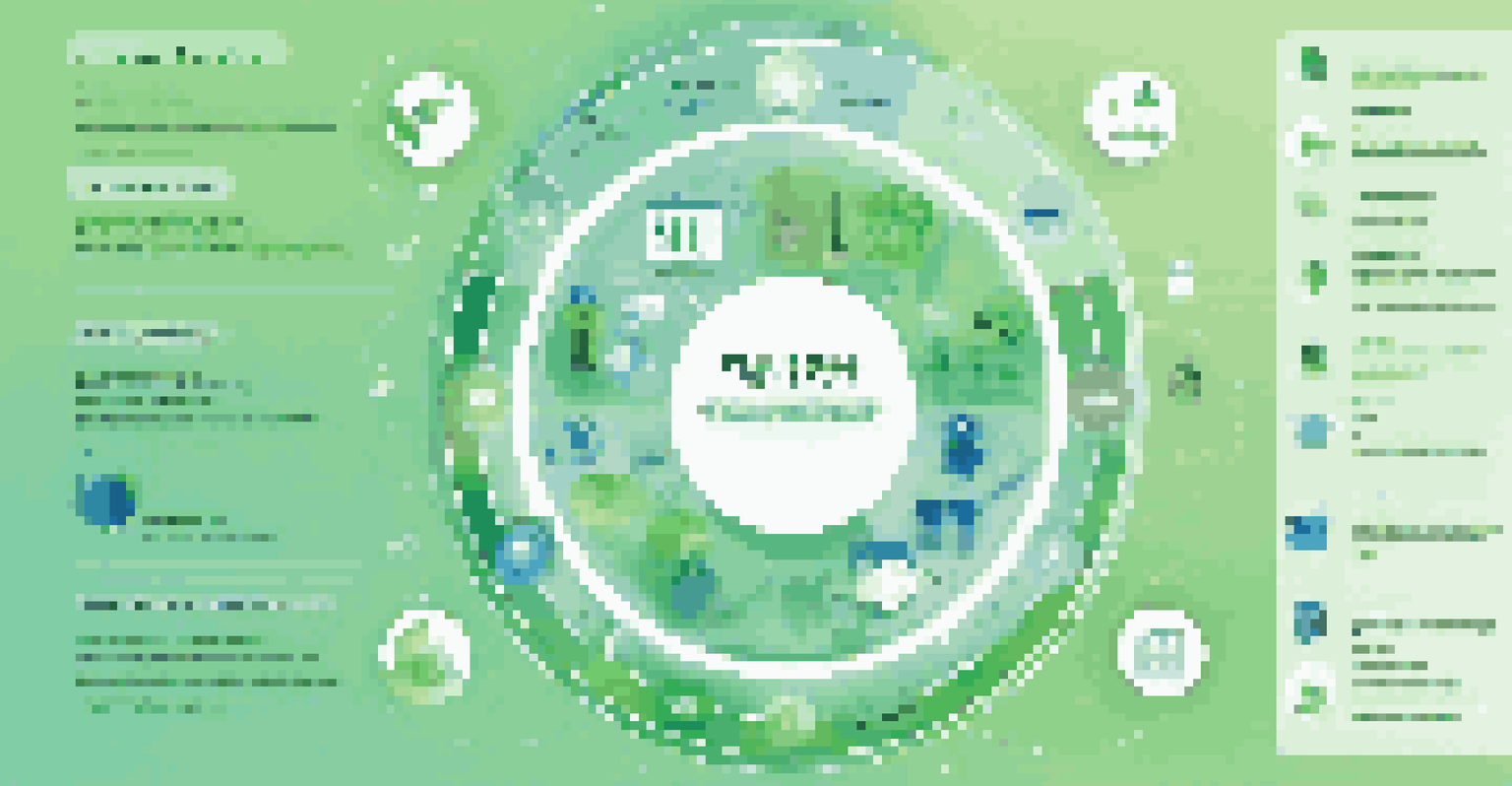Sustainable Software Development: A Global Perspective

Understanding Sustainable Software Development
Sustainable software development focuses on creating applications that minimize environmental impact while maximizing efficiency. This approach considers not just the code but also the energy consumed during development and operation. By integrating sustainability into the software lifecycle, developers can contribute to a healthier planet, making each line of code count.
Sustainability is no longer about doing less harm. It's about doing more good.
For instance, using cloud services that rely on renewable energy can significantly reduce the carbon footprint of software applications. Additionally, developers can adopt practices like code optimization, which not only enhances performance but also conserves resources. Thus, sustainable software development is about thoughtful choices that benefit both the user and the environment.
Moreover, as awareness of climate change grows, sustainable software development is becoming a critical factor for businesses aiming to attract eco-conscious consumers. By prioritizing sustainability, companies can improve their brand image and foster loyalty among customers who value environmental stewardship.
The Global Impact of Software Development Practices
Software development practices vary widely across the globe, influenced by local cultures, regulations, and technological capabilities. In countries with strict environmental regulations, developers are often more inclined to adopt sustainable practices. For example, European nations have been at the forefront of integrating sustainability into software development due to robust policies promoting green technologies.

Conversely, in regions where resources are scarce, the focus might lean towards cost-efficiency, sometimes at the expense of sustainability. This disparity highlights the need for a global dialogue on best practices and the sharing of successful models that balance both economic and ecological considerations. By learning from each other, countries can elevate their software development strategies.
Sustainable Software Benefits
Sustainable software development reduces environmental impact while enhancing efficiency and brand reputation.
In this interconnected world, the ripple effects of sustainable software practices can lead to significant environmental improvements. A small change in one region can inspire similar efforts elsewhere, creating a worldwide movement towards greener software solutions.
Key Principles of Sustainable Software Development
At the heart of sustainable software development are key principles that guide developers toward eco-friendly practices. These include reducing resource consumption, enhancing code efficiency, and ensuring long-term maintainability of software. By applying these principles, developers can create applications that are not only functional but also environmentally responsible.
The greatest threat to our planet is the belief that someone else will save it.
For example, prioritizing modular design allows for easier updates and reduces the need for full-scale rewrites, which can be resource-intensive. Similarly, adopting agile methodologies can help teams focus on delivering value while minimizing waste. These principles serve as a roadmap for developers looking to make a positive environmental impact.
Implementing these principles often requires a shift in mindset, pushing developers to think critically about their choices throughout the development lifecycle. By fostering a culture of sustainability within teams, software development can evolve into a practice that champions both innovation and ecological responsibility.
Challenges in Implementing Sustainable Practices
Despite the clear benefits, implementing sustainable software development practices comes with its challenges. One major hurdle is the lack of awareness and understanding among developers and stakeholders about the importance of sustainability in software. This gap can lead to resistance, as teams may prioritize immediate performance over long-term environmental considerations.
Additionally, the rapid pace of technological change can make it difficult for organizations to keep up with sustainable practices. New tools and frameworks emerge constantly, and not all of them prioritize sustainability. This can create confusion about which solutions to adopt, ultimately hindering the adoption of effective sustainable methods.
Global Practices Vary Significantly
Software development practices differ worldwide, influenced by local cultures and regulations, highlighting the need for a global dialogue on sustainability.
Finally, the initial costs associated with adopting sustainable practices can deter businesses, especially startups with limited budgets. However, it's crucial to view these costs as investments in the future, as sustainable practices often lead to savings over time through increased efficiency and reduced resource consumption.
Case Studies of Successful Sustainable Software Development
Several organizations have successfully implemented sustainable software development practices, serving as inspiring case studies for others. For instance, a well-known tech giant has made significant strides in reducing its carbon footprint by prioritizing energy-efficient data centers and utilizing renewable energy sources. Their commitment to sustainability has not only benefited the environment but has also enhanced their brand reputation.
Another example is a startup that focused on creating an eco-friendly application by optimizing its codebase and design. This approach resulted in lower energy consumption, making the software more appealing to environmentally conscious consumers. By showcasing these successful examples, other developers can see the tangible benefits of adopting sustainable practices.
These case studies demonstrate that sustainability is not just a trend but a viable strategy for businesses looking to thrive in an increasingly eco-aware market. By learning from these pioneers, developers can find innovative ways to integrate sustainability into their own practices.
Future Trends in Sustainable Software Development
As the urgency for climate action grows, the landscape of sustainable software development is poised for evolution. Emerging technologies, such as artificial intelligence and machine learning, are beginning to play a crucial role in enhancing sustainability efforts. For example, AI can optimize resource usage in real-time, significantly reducing energy consumption in software applications.
In addition, there is a growing emphasis on transparency and accountability in software development. Consumers and stakeholders are increasingly demanding to know how software impacts the environment, prompting companies to adopt more sustainable practices. This trend is likely to continue, pushing developers to prioritize sustainability in their projects.
Developers' Role in Sustainability
Developers can drive sustainability by adopting eco-friendly coding practices, choosing sustainable tools, and fostering a culture of environmental responsibility.
Furthermore, collaborations between tech companies, governments, and NGOs will likely become more common as we strive for a sustainable future. By working together, these entities can develop standards and frameworks that promote sustainable software development on a global scale, ultimately leading to more significant environmental benefits.
How Developers Can Contribute to Sustainability
Developers play a crucial role in driving the shift towards sustainable software development. One of the simplest yet most effective ways they can contribute is by adopting eco-friendly coding practices that minimize resource usage. This can include optimizing algorithms, reducing redundancy, and ensuring efficient data handling to lower energy consumption during execution.
Additionally, being mindful of the tools and technologies used in development is essential. Choosing platforms and services that prioritize sustainability, such as cloud providers powered by renewable energy, can make a significant difference. Developers can also advocate for sustainability within their teams, encouraging discussions and initiatives that prioritize eco-friendly practices.

Finally, continuous learning is vital. Staying updated on the latest sustainable practices and technologies allows developers to innovate and implement effective strategies in their projects. By taking small yet impactful steps, developers can contribute significantly to the broader goal of sustainability in the software industry.